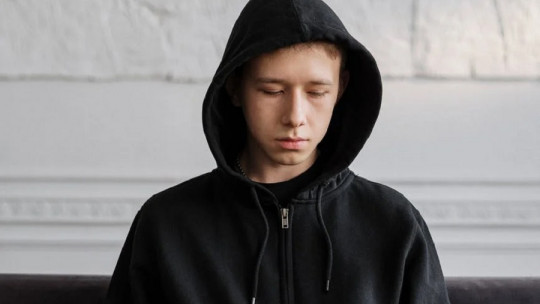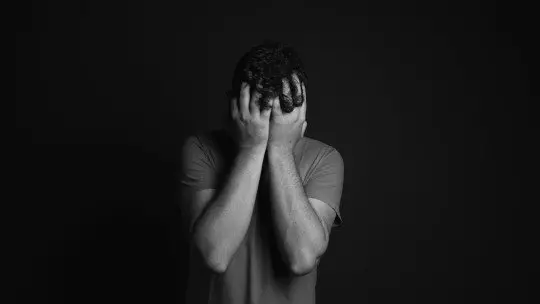
Self-harm among young people is a complex phenomenon that requires deep understanding. Defined as the deliberate act of inflicting physical pain on oneself without suicidal intentions, self-harm has emerged as an alarming mental health challenge in contemporary youth. According to recent studies, the incidence of self-harm has seen a significant increase in recent decades, highlighting the urgency of addressing this problem effectively.
It is essential to recognize that Self-harm is not simply impulsive behavior for no apparent reason. Rather, it is often a response to the complexity of the emotional and psychological challenges that young people face in modern society. Factors such as academic pressure, social expectations, family problems and untreated mental disorders can contribute to the adoption of self-harm as a way of coping with emotional pain.
The contextualization of this phenomenon must go beyond the mere identification of superficial behaviors, delving into the underlying psychology. By understanding the reasons behind self-harm, we can move towards more effective prevention and support strategies. Therefore, in this article we will a comprehensive approach to self-harm among young people and adolescents having the main objective of demystifying beliefs and addressing this issue in a respectful way.
Risk factors for self-harm in young people
Self-harm in young people is closely linked to an intersection of risk factors, which vary in their nature and complexity. Among the fundamental elements are psychological factors, where mental disorders such as depression, anxiety and behavioral disorders play a crucial role. The lack of effective coping skills and the inability to manage intense emotions also add to this complex web.
On a societal level, peer group pressure and unrealistic expectations can be significant catalysts. The need to fit in and meet unattainable standards often places young people in situations where self-harm appears to be an escape valve. The family environment plays a vital role, as lack of emotional support, abuse and family dysfunction can increase vulnerability.
Personal factors, such as self-esteem and distorted perception of one’s own body, also contribute to the complex web of reasons behind self-harm. It is crucial to address these elements from a holistic perspective to fully understand the picture and offer effective interventions. By recognizing these risk factors, we can implement preventive strategies and provide the support needed to help young people address the challenges they encounter on their path to mental health and well-being.
Social and mental pressure
Self-harm among young people is intrinsically linked to the social pressure and mental burden that characterize contemporary society. We live in an era where social expectations impose unrealistic standards, exacerbating emotional tensions. Constant comparison, often compounded by the omnipresence of social media, intensifies the pressure to conform to idealized images.
The relationship between mental health and self-harm is complex. The stigmatization of mental disorders contributes to young people hiding their suffering, choosing self-harm as a silent means of expression. Awareness of how these pressures impact young people’s mental health is essential to challenging misperceptions and fostering compassionate environments that promote emotional health.
It is imperative to advocate for public education about mental health and dismantle the associated stigmas. By doing so, we can create communities that understand the importance of caring for mental health, discouraging overwhelming social pressure and paving the way toward a more understanding and supportive environment for youth. Facing social and mental pressure requires a cultural shift that values authenticity and emotional well-being over unrealistic expectations, thus giving young people the freedom to be themselves.
How to help and prevent
Given the complexity of self-harm among young people, it is crucial to adopt caring approaches to offer support and prevent this behaviour. Open communication and empathy are cornerstones in early identification and addressing potential signs of self-harm. Friends, family and educators should educate themselves about the signs of emotional distress and provide an environment where young people feel safe expressing their feelings.
Prevention also involves addressing underlying risk factors. This includes promoting mental health through educational programs, eliminating the stigma associated with mental disorders, and creating school and family environments that foster emotional well-being. Providing access to mental health resources and support services is essential. The availability of trained professionals and help hotlines can be a lifeline for those facing internal struggles.
Collaboration between communities, schools and mental health professionals is key to a comprehensive approach. By understanding that self-harm is a symptom of underlying distress, we can work together to build a strong support network that promotes mental health and prevents the tragedy of self-harm among young people.
In conclusion, addressing self-harm in young people requires a holistic approach that includes psychological, social and technological factors. Social and mental pressure, along with the influence of technology, contribute to a challenging landscape. However, by encouraging open communication, demystifying mental health, and providing accessible resources, we can cultivate supportive environments. Prevention requires a collective commitment to building empathetic and educated communities, working toward the emotional well-being and safety of youth.








